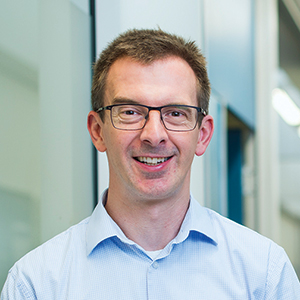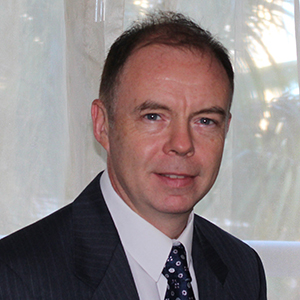New technology being developed jointly by the University of South Australia and multinational company Honeywell means people lost in the outback or stranded on a sinking boat will be able to transmit their location more quickly and accurately, helping authorities reach them sooner. A message transmitted by distress beacons can be decoded to provide rescue authorities with valuable information to aid rescue operations.
Combined with new satellites and the next generation of distress beacons, a software system developed by UniSA researchers can be used to pinpoint a beacon’s location to 50 metres accuracy within seconds, allowing search teams to plan their rescue operations more effectively.
Current location systems can generally pinpoint a beacon to within 5km and it can take 45 minutes or longer for a report from a distress signal to reach emergency authorities, depending on the nearest satellite, whether the beacon is fitted with GPS and how decoding beacon messages is handled.
The radio distress beacon system (known as Cospas-Sarsat) is used worldwide by aircraft, ships and people in distress, thanks to an intergovernmental, humanitarian cooperative involving 44 nations.
Distress alerts are detected, located and forwarded to more than 200 countries and territories, so that local search and rescue agencies can act.
Last year, 505 people in Australia were rescued in incidents involving the distress beacon system.
 The director of UniSA’s Institute for Telecommunications Research, Associate Professor Gottfried Lechner, says the technology currently in use traditionally relied on satellites orbiting close to Earth. Because of their relatively low altitude, each one might only see a state or small country at any time.
The director of UniSA’s Institute for Telecommunications Research, Associate Professor Gottfried Lechner, says the technology currently in use traditionally relied on satellites orbiting close to Earth. Because of their relatively low altitude, each one might only see a state or small country at any time.
“If no satellite is above you when you activate the distress beacon, then nobody knows until a satellite is in range and the satellite then needs to come into the range of a ground station,” Assoc Prof Lechner says.
These satellites use the Doppler effect (for example, the change of pitch heard when a vehicle sounding a horn approaches and recedes) to pinpoint the location of distress beacon.
“This technique can only pinpoint a location with a certain precision, which could be several kilometres. So, you don’t have instantaneous transmission and you don’t have the best accuracy,” he says.
A few years ago, a plan was agreed to start using medium altitude Earth orbit satellites which at altitudes of up to 24,000km, can see a much greater percentage of the planet at any time.
These are the same satellites used to transmit GPS signals and other navigation data. Each one of these satellites orbits the Earth every 12 hours and between them, they cover all the Earth’s populated areas all the time. With the signal received by three or more satellites, the beacon location can be calculated through triangulation quickly and accurately.
However, because the satellites cover a much greater area, there are a lot more signals and interference that needs to be filtered out before a distress beacon can be pinpointed. And this new system has to be integrated into the ground stations that communicate with satellites – potentially requiring expensive hardware.
UniSA and Honeywell teamed up to tackle this challenge, supported by an Australian Research Council (ARC) linkage grant, and have achieved a breakthrough by developing an algorithm that improves accuracy, cuts through background noise and doesn’t require new hardware.
The algorithm has been successfully tested on standard desktop computers – compared to previous versions that required a cluster of powerful computers to decode and locate a beacon.
“And we are continuing to improve the ability to receive distress signals even if the beacon antenna is damaged or hidden underneath a lot of trees – when the signal may be really weak,” Assoc Prof Lechner says.
“Parts of Asia and Russia are full of interfering radio noise that shouldn’t be there, particularly in highly populated areas. Our algorithm is fairly robust in ensuring the emergency beacon stands out from interference.”
Already, the team has been able to receive signals in Adelaide from the opposite side of the planet – a transmitter on an aircraft near Toulouse, France.
“That means one satellite can see and cover as much as half the Earth at any time.”
Combining these new systems provides instantaneous communications, taking about one second from a distress beacon being activated to it being received by a satellite, decoded by a ground station, and transmitted to search and rescue authorities. And it can pinpoint an active beacon down as low as 50 metres, or 30 metres for beacons fitted with GPS. Significantly, that compares to anywhere between 500 metres and five kilometres using the current system.
“If you’re on a sinking boat or in a plane crash, every second counts,” Assoc Prof Lechner says.
 Adjunct Associate Research Professor Dr Mark Rice, a Honeywell Senior Engineering Fellow, says the two organisations worked together to come up with a next-generation beacon simulator and software system that could be rolled out in existing ground stations. The system provides high accuracy, even with poor signals and interference.
Adjunct Associate Research Professor Dr Mark Rice, a Honeywell Senior Engineering Fellow, says the two organisations worked together to come up with a next-generation beacon simulator and software system that could be rolled out in existing ground stations. The system provides high accuracy, even with poor signals and interference.
“In a jungle or a choppy water at sea, that accuracy can make the difference between life and death,” Dr Rice says. “This will make it quicker and easier for search and rescue operations to find their target.
“If someone is in a ravine, the new system means there’s more chance that signal will be picked up.
“This an important breakthrough by developing a software-based system rather than a hardware-based system, which is expensive.
“Our system can be compiled to run on a standard server platform using existing hardware.”
The project also involves the Australian Maritime Safety Authority (AMSA), which is responsible for the ground receiving stations covering Australia, including large areas of the Indian, Pacific and Southern oceans as well the Australian Antarctic territories.
AMSA’s senior advisor for Response Systems, John Ophel, says the system UniSA has developed to help pinpoint people by processing satellite data, is extremely promising.
“Any improvement to reduce detection times means information can be relayed to search and rescue authorities earlier,” Ophel says.
“There’s not a lot of research being done in this area in the Southern Hemisphere, which has quite different radio characteristics from the rest of the world, so the work Gottfried and Mark are doing, looking at the impact of interference, is really important.”
New GNSS satellites (including Galileo, GPS and Glonass constellations) can already relay signals for the next-generation beacons, even though the new beacons are still being designed. The use of medium Earth orbit satellites will improve the ability to locate distress beacons.
“We can improve the accuracy of the system in the meantime by combining data from the different systems to pinpoint locations down to 1-2km before the next-generation beacons and better algorithms give us that big breakthrough,” Ophel says.
It’s likely to be a couple of years before ground stations are updated with the new technology and new distress beacons are manufactured and available for sale. Current generation beacons will continue to work even once the improved system is rolled out.